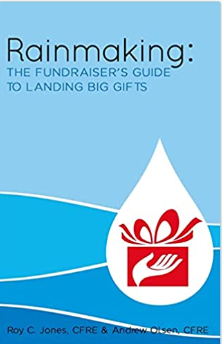A capital campaign can be an exciting activity and what is amazing is that almost any non-profit or charity can launch a capital campaign. It brings focus, excitement and energy to an organization. However, if done incorrectly, it can also bring THE END to an organization.
Sweet Briar College in Virginia nearly closed its doors after 114 years of operation. The institution raised over $200 million in restricted funds for capital campaigns in a decade. The college had to use the unrestricted portion of its endowment to cover the cost of higher discount rates. Sweet Briar’s total endowment dropped from $94 million to $84 million in just two years time, and more than $50 million of that was being restricted by the past donors.
With the number of non-profits now soaring close to 2 million in the United States (that is nearly 1 charity for every 150 households), the competition for the donor dollar is nothing short of fierce. Far more alarming are the number of non-profits going out of business. Roughly 30,000 to 60,000 non-profits and charities simply “disappear” from the IRS’s files each year; presumably, most of them have gone out of business.
In three surveys conducted by GuideStar, a consistent 8 to 10 percent of charities reported that they were in “imminent danger” of closing because of financial reasons.
Most nonprofits, like Sweet Briar, do not consider the fact that capital campaigns can hurt your annual fund and general operating budget, especially if annual fund donors are being targeted for a large percentage of the capital gifts. With nearly $200 million raised in Sweet Briar’s case, they learned the hard way that capital campaign donors will rarely give “twice” or release “restrictions” to pay for overhead and operations.
David S. Goettler, whose firm has assisted more than 1,500 capital campaigns for non-profits over the last 20 years says that in the high-stakes environment of a major capital campaign, “weaknesses and errors in judgment can be decisive.”
In a their article, Running the Red Lights; Nine Reasons That Capital Campaigns Fail, Goettler lays out nine scenarios that can spell failure to any non-profit if the capital campaign is managed incorrectly.
1. Negative image or perceptions
From the community or constituency’s perspective, an organization may have serious “image problems” —which can cause people (whatever their personal opinions of the organization may be) to question the wisdom of getting involved. These issues may include:
- Lack of stature, visibility, and/or credibility
- Past problems with the quality or accessibility of services
- Chronic operating deficits or excessive long-term debt
- A history of unsuccessful capital campaigns
2. Lack of organizational leadership
Some organizations lack leadership at the board and/or CEO level. It is the chief executive and the trustees who run the organization on behalf of the community — and who are responsible, in the end, for the wise use of the community’s dollars. If the individuals who lead the organization don’t have the trust and confidence of the “donor community,” they may need to be replaced by leaders who do.
3. Lack of a compelling vision and/or strategic plan
An organization embarking on a major capital campaign needs both a compelling vision of what it wants to be and do, and a credible plan for getting there. (Here, we’re talking about a strategic plan, rather than a campaign plan.) Without a vision and a plan, the organization will find it difficult to build a case that (a) captures the imagination of donors and volunteers, and (b) convinces them that the vision can, in fact, become a reality.
4. Out of touch
It’s possible for an organization to gradually lose touch with the community, and get into the habit of functioning largely from an internal perspective. For such an organization, in which reality is defined by its own limited sphere of interest and activity, it may become difficult or impossible to understand how major donors and community leaders see the world and make decisions. When an organization talks more about its own “needs” than those of the community, or the population it serves, that’s often a sign that the lines of communication need to be improved.
5. A narrow or uninvolved donor constituency
The organization’s donor constituency may be too narrow to support the campaign on its own. Or, more commonly, potential donors and volunteers may not be involved with the organization in a meaningful way. If there aren’t enough substantial prospects already affiliated with the organization (as there often are not), then more prospects will have to be identified and “cultivated”—i.e., new relationships will have to be developed.
6. Jumping the gun
Some organizations attempt to enlist the general chair much too early in the campaign. Or they announce the campaign as soon as they’ve decided to go forward. Either can be fatal.
The leaders of many organizations seem to believe that until the general chair is enlisted, the campaign has no credibility, and nothing can be accomplished. So they begin to approach their top candidates prematurely (making it easy for them to say no)—or they settle for whoever is available.
7. Lack of competent development staff, campaign budget, or functional systems
When an organization’s development staff lacks experience, knowledge, and/or competence in the area of capital campaigns, and counsel is not involved, volunteers will not receive the expert guidance and support they need to be effective, and the capital campaign will soon flounder.
8. An unrealistic campaign plan, schedule, or goal
To establish a realistic campaign plan, schedule, and/or dollar goal, you need both hard data (of the kind that can normally be obtained only through a planning or feasibility study) and the experience and judgment it takes to interpret the data. Without these resources, it’s almost impossible to estimate:
How much the organization can reasonably expect to raise.
What portion needs to come from, say, the top 30 or top 100 gifts.
How many volunteers can be recruited to solicit those gifts.
How long all of this will probably take.
Mere guesswork will not be good enough; the plan must be sufficiently credible and workable to maintain the confidence of volunteers and the momentum of the project until the goal is attained. Otherwise, many will drop out and/or “burn out,” and the campaign will not be remembered as a happy experience.
9. No planning or feasibility study
Without a professionally conducted planning or feasibility study, the organization may find itself working in the dark. It may lack the current, objective, and strategic information that’s needed to plan and implement a successful campaign. A thorough study, moreover, will usually identify any of the other “red flags” described above– perhaps saving your organization from a major embarrassment.
Thanks to Goettler Associates, Inc. All Rights Reserved.



Great Article!
thank you Lisa! Roy 434.258.4416